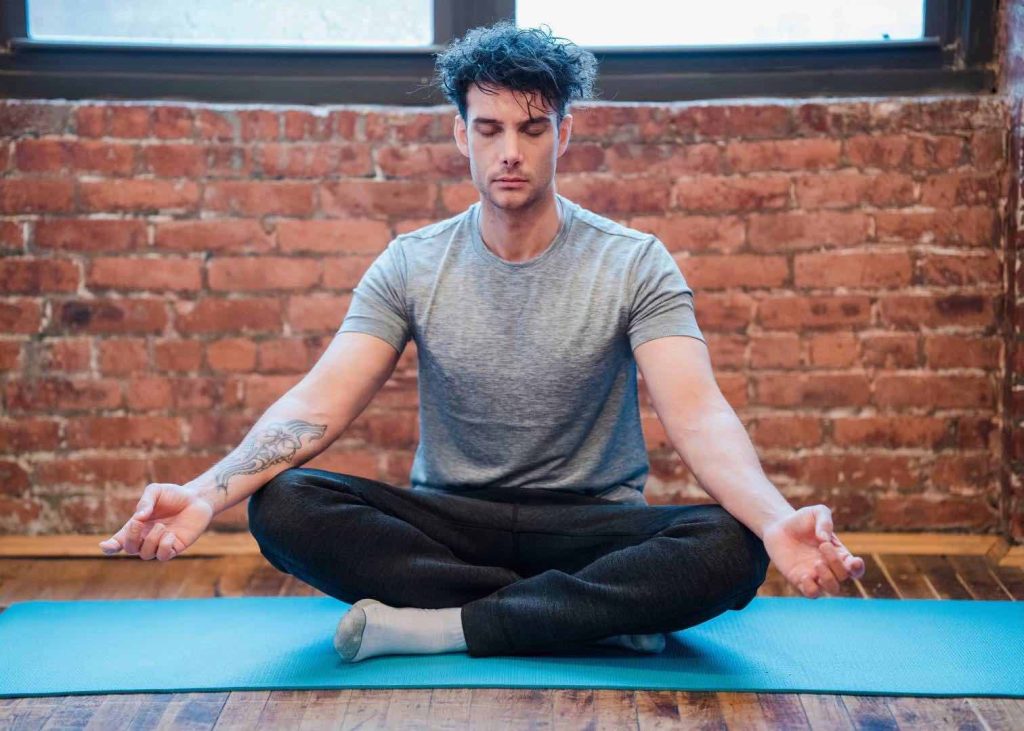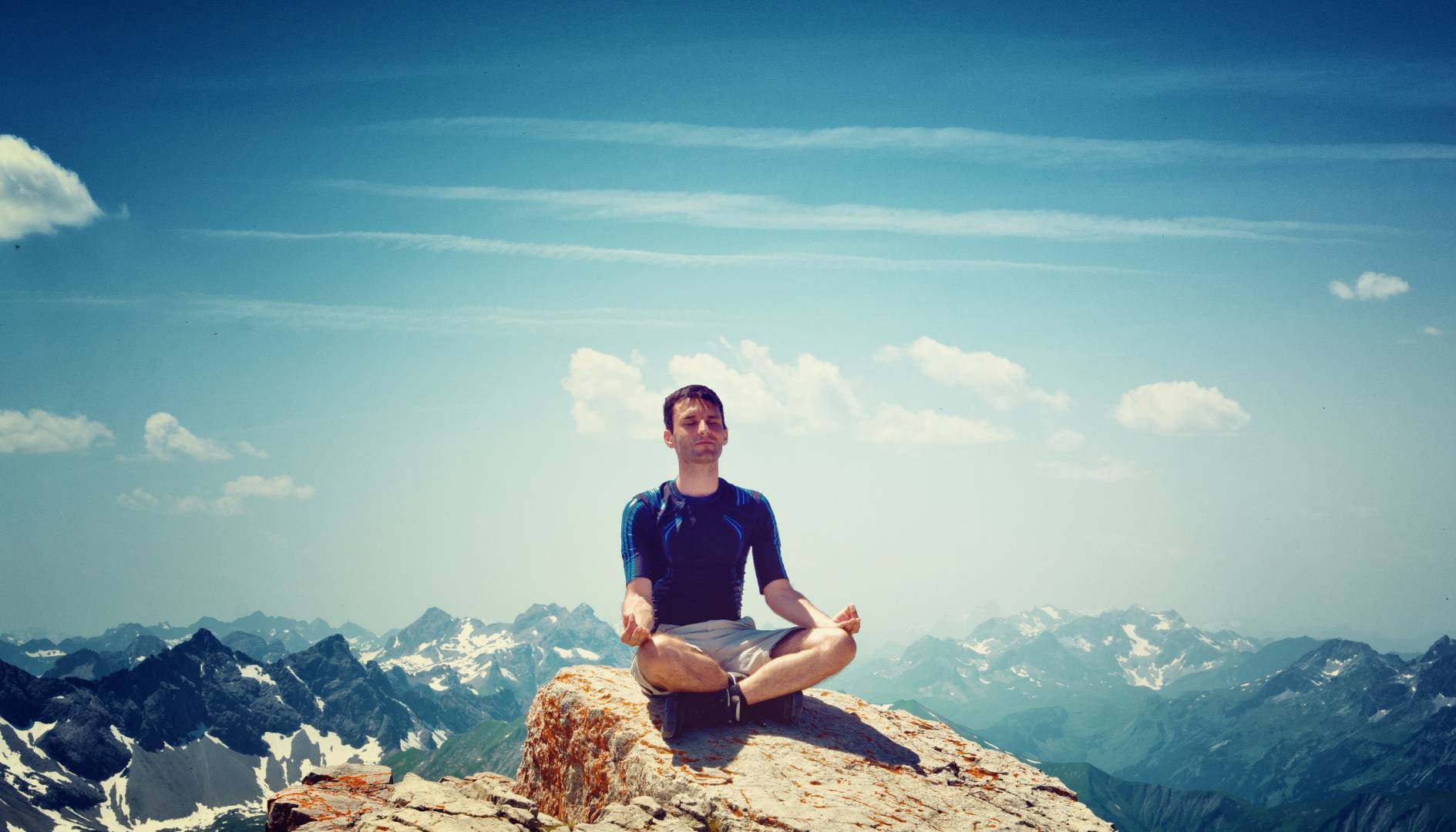Meditation is not easy. To make things worse, people approach the practice with unrealistic expectations. Believing that they find peace and stillness within minutes. Sadly though, it’s not that simple. One of the main obstacles to meditation is a restless mind.
I encounter this all the time, as do even experienced meditators. Nobody can prevent thoughts from popping into their heads. They’re unpredictable, intrusive, and sporadic. In fact, we generate an average of 60,000 of them per day.
That’s a staggering figure.
So, how do you approach this problem? Well, read on and you’ll find out.
Let’s explore this together, ready?
1 Start with Acceptance to Bring Peace
One of the most important aspects of mindfulness is acceptance. Resistance to what is happening in the present often causes us suffering. If you can’t change or leave a situation, then acceptance is the best course of action.
It’s important to take this approach when meditating because you can’t force your mind to be still. It has to happen organically.
How do you facilitate this? By learning to observe your thoughts without judgment. When you do, it creates space around them, giving you distance and perspective.
Once you gain this, you’ll find that your restless mind gradually begins to become slower. The noise and distortion fade, as your awareness and peace strengthen. It feels like pure bliss when this happens. And yes, these moments are possible, I’ve experienced them many times.
Need help getting started? Be sure to check out my post, How to Observe Your Thoughts with Meditation. There you’ll find some useful imagery you can use to watch your restless mind.
“Once we accept our limits,
— Albert Einstein
We go beyond them.”
2 Use Your Breath as an Anchor to Ground You
An anchor? That’s right. Not from a ship though, obviously. You use an anchor in meditation to ground you in the present moment. You could use sounds, a mantra, your body, or your breath, which is the most common.
Breathe deeply and slowly, in through the nose and out through your mouth.
Focus on the movements of your diaphragm and how the air comes in and out. Be curious. You can also count your breathing or narrate it in your head. How? Just say “breathing in, breathing out”.
It’s inevitable that your mind will wander, which is normal. When it does, label your thoughts. Say to yourself, “Here’s thinking”, then go back to your breath. This is like a brain workout. You’re training your muscle of attention and focus with each repetition.
Over time, you’ll notice how you can do this with more ease. Allowing you to let go of thoughts and welcome relaxation.
3 Focus on Your Body Sensations

It’s common that our thoughts are influenced by how we feel. Anxiety causes a racing mind. Anger fuels hatred and loathing. Sadness feeds rumination and negativity. Guilt can bring shame and regret. You get the idea.
For this reason, it’s important to tune into your body. This empowers you to cultivate a deeper self-awareness and understanding. That way, you may be able to understand more clearly what is causing your restless mind.
It also allows you to explore and release trapped emotions. Ones that you may have been suppressing for years. Approach this with caution though, as it could be overbearing.
How do you begin?
Look into meditations such as the RAIN practice or body scan. These guide you to explore the sensations occurring within your body. When done correctly, they do so in a gentle and compassionate manner.
These kinds of meditations can help you to release tension. Enabling to feel lighter and more relaxed, as you turn away from your restless mind.
“The mind and the body are like parallel universes. Anything that happens in the mental universe must leave tracks in the physical one.”
— Deepak Chopra
4 Adapt Your Meditation Practice

Meditation is a personal practice. What works well for someone else, may not resonate with you at all, which is fine. So, if you’re feeling stuck or frustrated, make changes. Try different meditations, approaches, and techniques.
Experiment and see what works well for you.
Meditate at different times during the day. Try meditations with a guide and without. Stop using a timer and see how it flows. Consider how long you’re meditating for. You might benefit from shorter or longer durations. Try new apps. Read books and listen to podcasts to learn more about the practice.
Also, consider the space that you meditate in. Make sure it’s quiet, comfortable, and inviting. If it isn’t, then get creative. Incorporate relaxing and cosy lighting. Use incense. Repaint the walls. Treat it as your safe haven.
You get the idea.
It can take a while to discover what best suits you. Be patient, experiment, and stick with the practice.
5 Calm Your Mind and Body Before Meditation
Working to calm the mind and body before meditation can reduce restlessness. What works well? Exercise is a great way to burn up and release negative energy to decrease stress and anxiety. Working out also releases endorphins, which enhance your mood and relax you.
You can also listen to music but choose genres that help you to feel calm. Or find relaxing nature sounds to put you in a state of zen. There are plenty to choose from on YouTube.
Finally, try some slow breathing techniques. Such as the 4-7-8 technique, or box breathing. Doing so calms your nervous system and slows down your heart rate. In turn, this helps to settle and ground your restless mind in preparation for meditation.
Finally, journalling and writing down your thoughts can be useful. Enabling you to get them into perspective.
“Calm mind brings inner strength and self-confidence”
— Dalai Lama
6 Meditate without Expectation

It took me a while to learn this lesson. When I meditated, I was always looking to reach inner peace and relaxation. So, when I didn’t reach this state, frustration and disappointment would arise.
Don’t fall into the same trap.
Meditation is hard. Sometimes it will flow, sometimes it won’t, and that’s fine. In fact, this is normal. Our moods, feelings, and emotions are always changing. It’s called being human.
Among those obstacles is having a restless mind. I experience this all the time, but now I let go of expectations. You should do the same. So, accept what comes. Doing so frees up the practice so it can unfold organically. Having this mindset also helps you to avoid common pitfalls and traps.
This is a wise way to approach the world and your life. Having expectations causes us suffering and often causes people to want to give up.
7 Be Consistent with Your Meditations
Meditation takes time to learn and like any habit, consistency is key. Set time aside every day to meditate, even if that’s only for 10 minutes. Regular practice is what builds the foundation of a successful meditator.
If you miss one day, that’s ok. But try your best to not miss two days in a row.
The more you meditate, the stronger your muscle of attention and focus will become. As will your self-awareness, which is vital to understanding your own mind and body better.
Also, remember to be self-compassionate during your practice. That way, when you encounter difficulties, you won’t give up. And remember, even experienced meditators struggle to meditate at times.
Once you establish meditation as a habit, you’ll actually start to look forward to it. It’s dedicated time to hone in and recalibrate.
“Consistent action creates
— Christine Kane
Consistent results.”
8 Embrace Your Meditation Journey

Yes, it’s cliché, but just like life, meditation is also a journey. It will be filled with ups and downs. You’ll have good sessions and bad sessions. Relish in them both. Be grateful for the moments of inner peace. And see the difficulties as opportunities to learn, gain insights, and improve your practice.
Meditation is a skill that can be life-changing. One you never stop learning and improving, which means there’s no point of arrival. So, better learn to enjoy the process, right?
Having a restless mind is the biggest obstacle for most meditators. Be patient, allow it to be your teacher and see it as a challenge to overcome. Approach meditation with this attitude and you can’t go wrong.
Keep Going with Your Practice
Managing a restless mind during meditation is a common problem. But you can manage and embrace it with the right mindset, attitude, and approach. Use the power of acceptance. Experiment with anchors, and focus on your body sensations.
Adapt your meditation if it’s not working for you. Try calming yourself before your practice and meditating without expectation. Be consistent and embrace the journey. Relish in both the good and bad, they’re all opportunities to learn.
Finally, focus on observing your thoughts rather than emptying your mind. Meditation is not about achieving calm, but learning to be at peace with your restless mind.
Once you understand these principles and follow these guidelines, you’ll notice a difference.
Did you find this post useful? I’d love to know in the comments.
Take care of yourselves,
Chris from Mindful Way to Be



